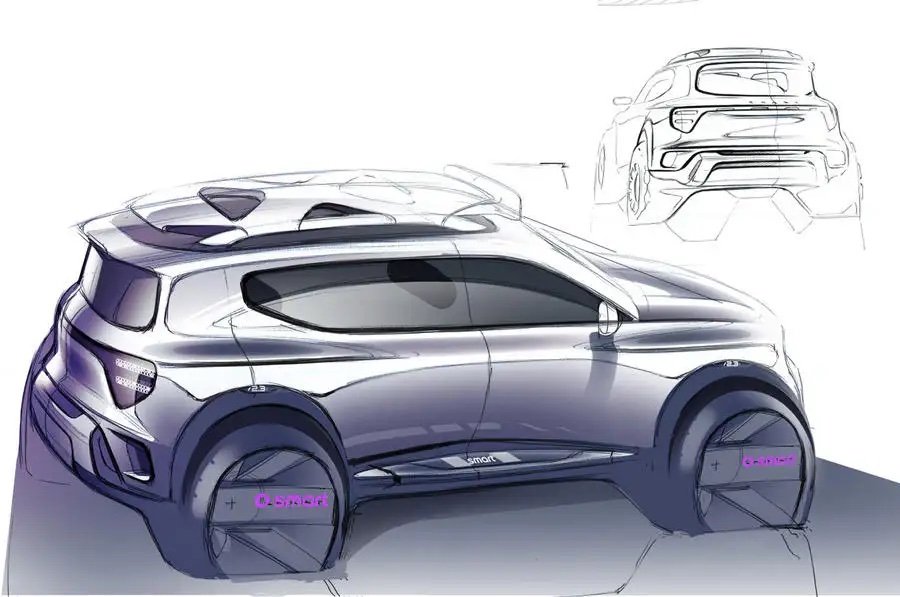Smart #5 SUV primed for reveal as brand's biggest car yet

Smart has confirmed it will preview its largest and most spacious model to date, an electric SUV called the #5, at next week’s Beijing motor show.
The new model, described as moving “far beyond the urban boundaries” of original Smart models, will be unveiled in concept form prior to the start of production in China later this year and planned UK sales in 2025.
As the third Smart car to be jointly developed by the brand’s majority shareholders, Geely and Mercedes-Benz, the #5 will join the recently introduced Smart #1 and Smart #3. A fourth new model, a successor to the two-seat Fortwo called the #2 is, set to appear in 2025.
At well over four metres in length, the new Smart #5 SUV has been conceived to directly rival the Mini Countryman, BMW X1 and Volvo XC40.
Sketches reveal that it will take on a distinctly more upright shape than the #1 and #3, with a bluff front end, cladded wheel arches, long rear doors and a near-vertical tailgate housing a wraparound light bar. Notably, the overhangs are kept to a minimum in a bid to provide maximum interior space.
The concept in Beijing will ramp up the rugged elements with off-road styling flourishes, including a roof-mounted storage compartment with LED lights, a shovel, inflatable chairs and a snowboard.
It is based on the same platform as the #1 and #3. Engineered jointly by Sweden-based China Euro Vehicle Technology (CEVT) and its parent company, Geely, the Sustainable Experience Architecture (SEA) already underpins a diverse range of Geely-brand models, including the Volvo EX30 and its sibling model, the Zeekr X.
Among the developments tipped to feature on the #5 is an 800V electric architecture. Up to now, all electric-powered Smart models have received a 400V system. It is also planned to offer the choice between single-motor rear-wheel drive and dual-motor four-wheel drive, as well as batteries with differing energy content.
As with the car's smaller siblings, buyers will be able to choose between standard and more powerful Brabus-enhanced performance #5 models - the latter aimed at challenging the Mini Countryman John Cooper Works (JCW).
